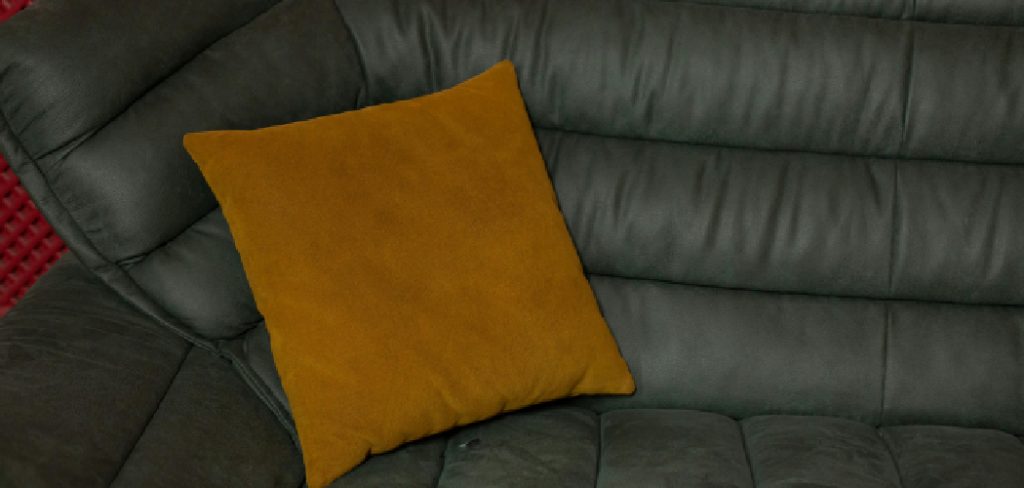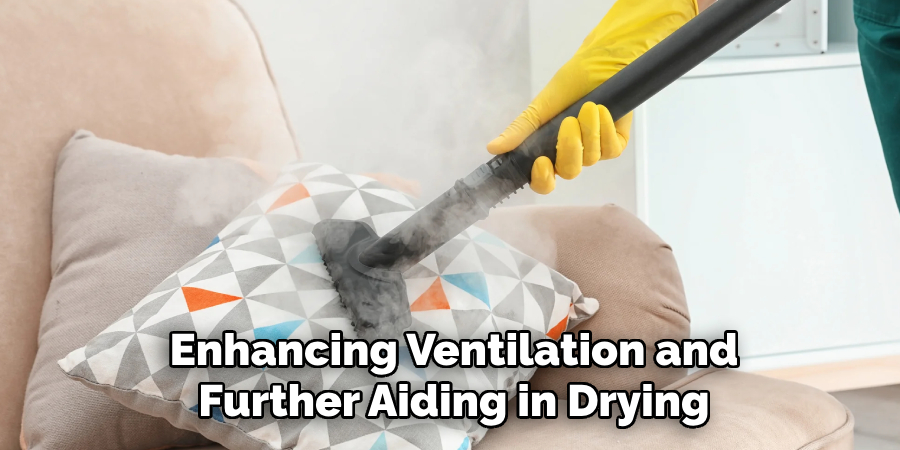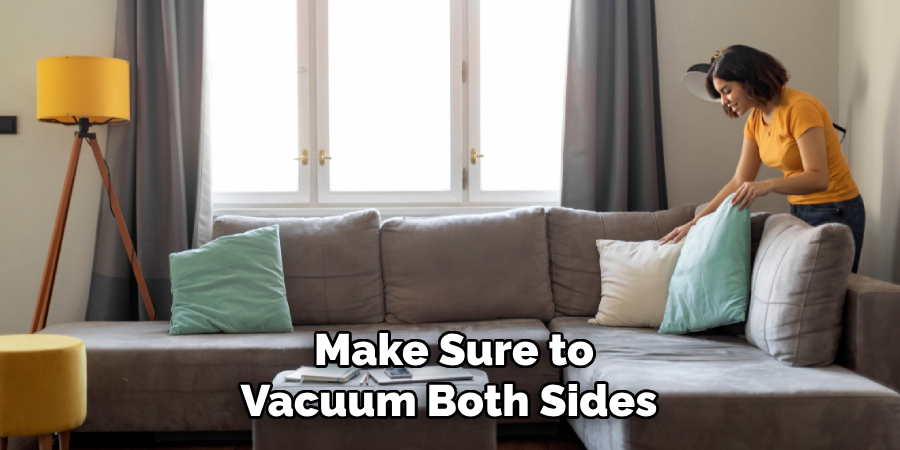Drying couch cushions effectively is essential to maintain their condition and hygiene. There are numerous reasons why cushions might require drying: spills from drinks or food, routine cleaning that leaves them damp, pet accidents, or simply being exposed to excess moisture in the environment. Understanding how to dry couch cushions properly is crucial because failing to do so can lead to mold and mildew, which damage the cushions and create unpleasant odors that can permeate your living space.

Proper drying practices also extend the life of your cushions and ensure they remain comfortable and fresh. In the following sections, we will explore various methods to achieve efficient drying, including air drying, utilizing fans, employing heat application techniques, and offering additional tips for speed drying. Each method will be carefully explained to help you choose the best approach for your situation.
Identifying the Cushion Type and Material
Check the Cushion Material
Before proceeding with any drying method, it’s important to first identify the type and material of your couch cushions. Common cushion types include foam cushions, down-filled cushions, and polyester-fiber cushions. Foam cushions are known for their durability and resistance to deformation, but they can retain moisture if not dried properly. Down-filled cushions offer a soft, luxurious feel but require careful handling to maintain their loft and prevent clumping.

Polyester-fiber cushions are typically lightweight and easy to manage but can vary in their drying needs depending on the density of the fibers. Knowing the material is crucial because it impacts the choice of drying method; certain materials may be prone to damage or deformation if subjected to inappropriate conditions such as excessive heat or humidity.
Remove the Cushion Cover (if possible)
If your couch cushions have removable covers, they should be removed before drying them themselves. Removing the covers allows you to clean and dry them separately, minimizing the risk of damage to both the cover and the cushion. Check the care label inside the cushion cover for specific washing instructions. Generally, fabric covers can be machine-washed or hand-washed, depending on the material. Follow the care label instructions for drying, whether it be air drying or using a dryer on a gentle cycle. This step ensures that the cover retains its shape and appearance while the cushion itself is appropriately dried.
Initial Water Removal Techniques
Step 1: Blot Excess Moisture
When dealing with wet couch cushions, the first step is to blot up as much excess moisture as possible. Begin by placing a dry towel or a stack of paper towels over the wet areas of the cushion. Gently press down to absorb the water. It is crucial to apply only gentle pressure during this process—applying too much force can push the water deeper into the cushion, making it more challenging to dry and increasing the risk of mold growth. Replace the towel or paper towels as they become saturated to ensure maximum absorption and effectiveness.

Step 2: Press Cushions to Release Water
After blotting, the next step involves carefully pressing the cushions to release additional water. Lay the cushion flat on the floor and use your hands to press down on it, starting from one end and moving slowly across the entire surface. The goal is to gently push the water out without damaging the cushion’s material. It’s important to avoid twisting or wringing the cushions, particularly if they are made of foam, as this can lead to deformation or tearing of the material. By using these techniques, you can effectively remove significant moisture before proceeding to drying methods.
How to Dry Couch Cushions: Air Drying Couch Cushions
Step 1: Position the Cushions for Optimal Airflow
To facilitate air drying, strategically position your couch cushions to allow maximum airflow. Place the cushions upright, which helps air circulate around both sides. If necessary, angle them against each other or support them to maintain this posture and expose more surface area to the air. Position the cushions near a window or in a well-ventilated area of your home to use natural air movements, which aids in moisture evaporation. Ensuring cushions are properly aligned in a spot with ample airflow is key to an efficient drying process.
Step 2: Use a Fan or Open Windows
Accelerate the air-drying process by utilizing fans. Place an oscillating fan near the cushions, directing the airflow evenly over the surfaces. This constant breeze speeds up evaporation and prevents moisture from settling. If weather permits, open windows to introduce fresh air into the space, enhancing ventilation and further aiding in drying. By combining the use of fans and natural breezes from open windows, you can substantially decrease drying time, especially in humid conditions where airflow can hinder mold growth.

Step 3: Flip and Rotate the Cushions
To ensure your cushions dry uniformly, periodically flip and rotate them. This practice helps avoid any areas becoming overly saturated or stagnant with water, which can lead to unpleasant odors or, worse, mold development. Every few hours, turn the cushions over and rotate them slightly, paying attention to any sections that feel wetter. This technique promotes even drying across the entire cushion, maintaining consistency in moisture removal and preserving cushion integrity.
Step 4: Allow Adequate Drying Time
Air drying, while effective, demands patience as it can take anywhere from several hours to a full day, contingent on the thickness and material of your cushions. It’s important to give your cushions enough time to dry thoroughly to prevent the development of mildew or odors. Rushing this process by attempting to use cushions prematurely can lead to improper drying, compromising both comfort and hygiene. Be patient and ensure they are completely dry before placing them back on your couch for optimal results. This thorough approach will help maintain the quality and longevity of your couch cushions.
How to Dry Couch Cushions: Using Heat to Dry Couch Cushions
Step 1: Apply Low Heat with a Hairdryer
When dealing with targeted wet spots on your couch cushions, a hairdryer set to a low heat setting can be an effective tool. Focus on the areas requiring extra attention, positioning the hairdryer a few inches away from the fabric to avoid overheating or damaging it. Move the hairdryer steadily across the surface to evenly distribute the warmth and ensure efficient drying. Monitoring the process closely and checking the cushion regularly is crucial to prevent overheating, which could compromise the material’s durability and texture.
Step 2: Use a Dehumidifier in a Closed Room
A dehumidifier can facilitate the drying process by reducing air moisture levels. Place the dehumidifier in a closed room with cushions to create an optimal drying environment. For enhanced effectiveness, consider utilizing fans or auxiliary heaters alongside the dehumidifier to circulate air, thereby accelerating moisture evaporation. Position the cushions strategically to maximize exposure to the air currents generated by the dehumidifier and fans. This combination hastens drying and mitigates the risk of mildew development in humid conditions.

Step 3: Avoid Direct Sunlight or High Heat
While it might seem tempting to expedite drying by placing cushions under direct sunlight or near high-heat sources, this practice should be avoided. Prolonged exposure to direct sunlight can lead to fabric fading, shrinkage, or even deterioration of cushion foam. High heat settings can exacerbate these issues, causing irreversible damage over time. Materials like foam are particularly susceptible to heat degradation, which can alter their structural integrity. Always opt for controlled environments when employing heat, ensuring moderation and careful monitoring to preserve your cushions’ quality and prolong their lifespan.
Drying Foam Cushions
Step 1: Squeeze Out Excess Water Carefully
When drying foam cushions, gently press them to expel excess water. Place the foam on a sturdy surface and use the palms of your hands to press down gradually from one side to the other. This technique helps to avoid compromising the cushion’s internal structure. Remember, foam is sensitive to deformation, so never fold, twist, or wring it. These actions can cause the foam to lose shape or sustain irreparable damage, impacting comfort and functionality.
Step 2: Lay the Foam Flat for Even Drying
After removing as much water as possible, lay the foam cushion flat in a location with good ventilation to encourage even drying. Select a spot with decent airflow to facilitate moisture escape. It’s crucial to periodically flip and rotate the cushion as drying progresses, ensuring that all sides are exposed to air and drying uniformly. This process prevents any single area from staying damp and reduces the chance of mold growth.
Step 3: Be Patient – Foam Takes Longer to Dry
Due to their dense structure, foam cushions typically endure a lengthy drying period, often requiring 24 to 48 hours for complete moisture removal. Patience is essential during this drying phase to prevent premature usage, which could lead to incomplete drying and unwanted odors. Adequately dried foam maintains its elasticity and comfort levels, extending the life of your cushions.
Speeding Up the Drying Process
Step 1: Use a Wet-Dry Vacuum
A wet-dry vacuum is an effective tool for quickly extracting excess moisture from couch cushions. Begin by setting the vacuum to the wet setting and carefully running the nozzle over the surface of the cushions, paying extra attention to particularly saturated areas. Make sure to vacuum both sides of the cushions to ensure thorough moisture removal. This step minimizes the time and effort required in the subsequent drying stages.

Step 2: Use Absorbent Towels in Conjunction with Fans
Once most water has been extracted, lay dry absorbent towels over the wet spots on the cushions. Apply gentle pressure to help wick away any remaining moisture. Immediately afterward, position a fan near the cushions, set to a medium or high setting, to facilitate evaporation. Combining towels and airflow will accelerate the drying process, preventing mold or mildew issues.
Step 3: Space Cushions Out for Better Air Circulation
To enhance the effectiveness of drying, space out the cushions and elevate them on a rack or chairs to allow air to circulate all around them. This practice ensures that no area remains damp and that air reaches every side, significantly reducing drying time and promoting even evaporation throughout the material. By adhering to these steps, you can effectively speed up the drying process while preserving the integrity of your couch cushions.
Conclusion
In conclusion, understanding how to dry couch cushions effectively is crucial for maintaining their condition and preventing mold or damage. Key methods include the careful use of low heat, like hairdryers and dehumidifiers, to manage moisture levels efficiently. Utilizing wet-dry vacuums for quick moisture extraction and employing absorbent towels alongside fans can significantly accelerate drying time. Remember to carefully handle foam cushions, squeezing out excess water gently and allowing ample time for air drying.
Avoid shortcuts like excessive heat or direct sunlight, which could harm the fabric and foam. Patience ensures all moisture is thoroughly eliminated before reassembling and using your cushions. Regularly applying these techniques will ensure your cushions remain in excellent shape, offering long-lasting comfort and cleanliness. By meticulously following these steps, you’ll enhance the longevity of your couch cushions, even when exposed to regular spills or moisture.